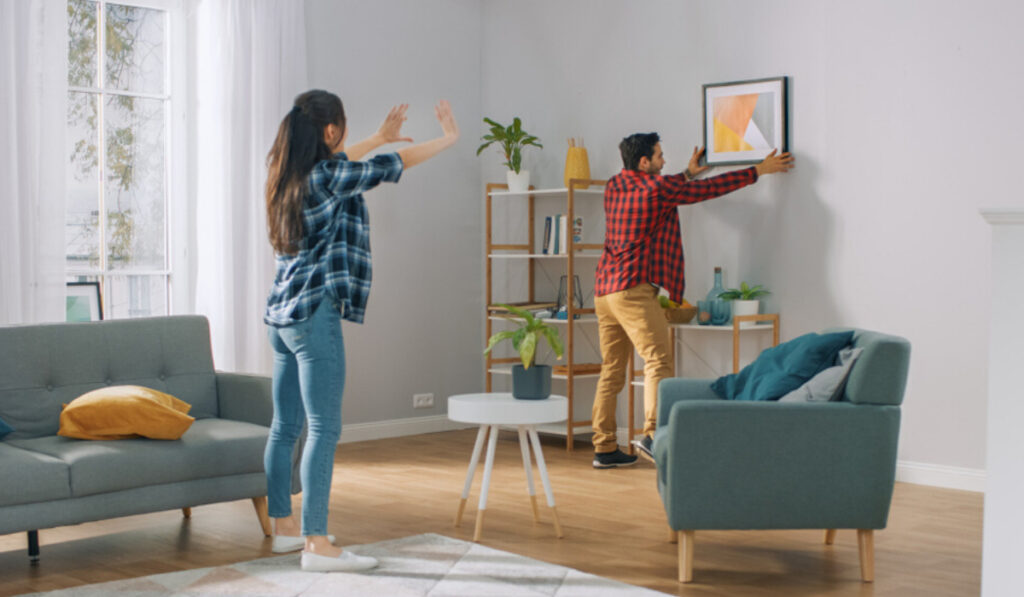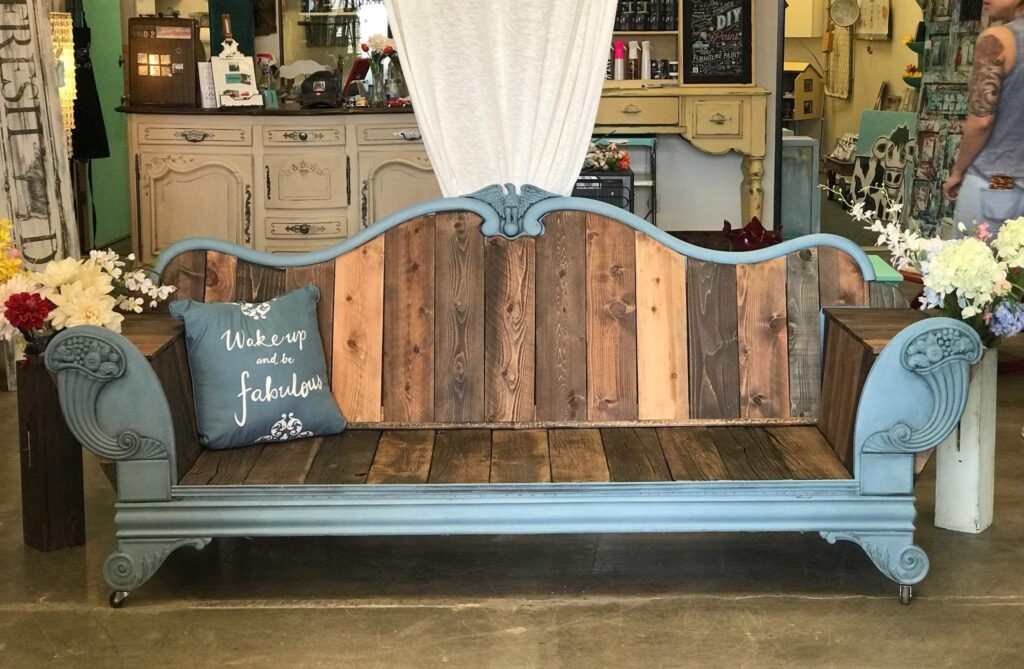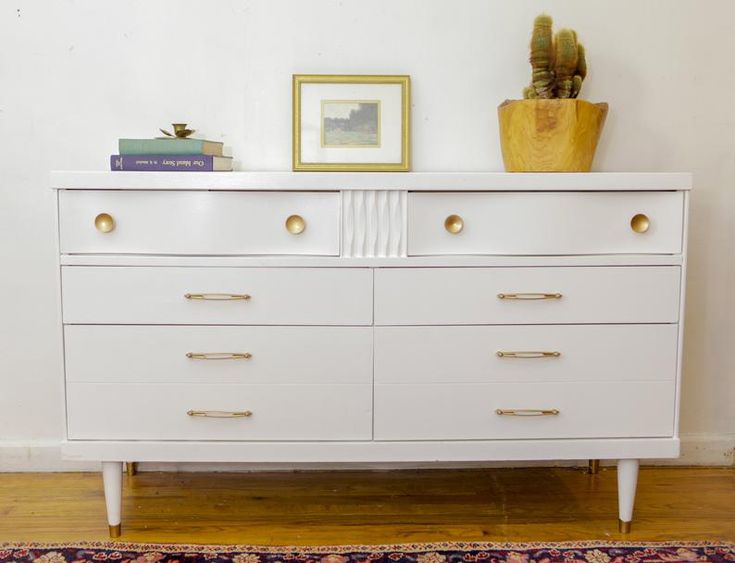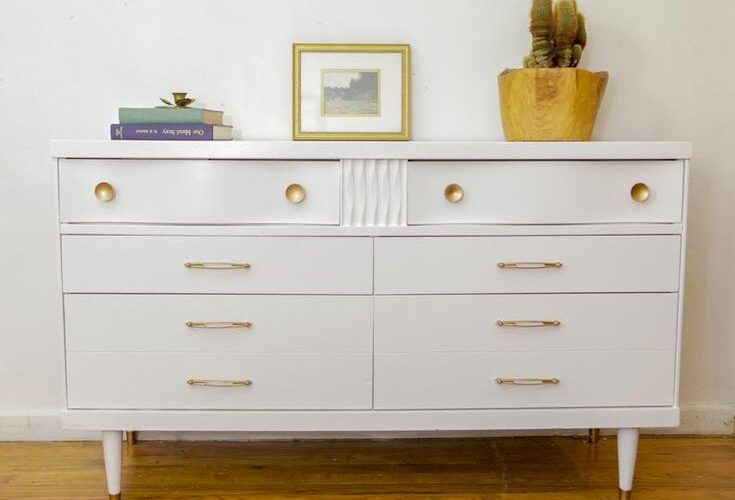Upcycling is transforming an item into something more useful or valuable. Wood furniture is particularly easy to upcycle as it is often made from robust materials and can easily be given a new lease of life.
Upcycling wooden furniture has the added benefit of being more environmentally friendly than buying new pieces, as well as saving you money in the long run. Not only does upcycling create unique one-of-a-kind furnishings for your home, but it also helps protect your wood furniture from further damage over time by giving them a protective sealant that will help keep moisture out while still allowing them to breathe naturally.
Additionally, restoring old pieces allows you to reimagine their use and placement in the home – add a fresh coat of paint or stain to an old chair or table and watch it transform into something entirely different!
Surface Preparation

source: pinterest.com
Once you have decided to upcycle your wooden furniture, you must begin by preparing the surface for painting or staining. This can be done by first removing any dirt, dust and debris from the surface with a damp cloth. You may also want to lightly sandpaper to smooth out any rough patches on the wood before proceeding.
Next, you should inspect all parts of your piece for damage, such as cracks or splits and fill them in with appropriate materials, such as wood filler. After filling any damages, ensure all surfaces are even before moving on to painting or staining.
The next step when preparing your furniture for upcycling is adhering pieces together, if necessary, and ensuring they are secured with nails or screws before beginning work. With careful planning and proper preparation techniques – your old wooden furniture can be given new life!
Staining and Finishing

source: pinterest.com
Staining and finishing wooden furniture is an important step in the upcycling process as it helps to protect your piece from further damage over time. Different staining techniques like wiping and brushing, can be used depending on the desired look. Additionally, there are numerous types of finishes available for use on wood furniture, ranging from varnish and lacquer to oil-based stains and water-based solvent-free woodstain.
When it comes to staining your wooden furniture pieces, it is best practice to test out any new product before beginning application – this will ensure that you get the desired result without running into any unexpected issues during or after completion! You should also follow all directions provided by any woodstain products closely, as they contain valuable information regarding proper setup times between coats and drying periods for a successful stain. It is also important not to rush through this process too quickly; taking extra care with each step will produce better results overall!
Finally, once you’ve successfully stained your wood furniture, you can add color and design elements by painting the furniture or adding layers of stain if needed!
Protecting Wooden Furniture

source: pinterest.com
When protecting wooden furniture, one of the most common and effective methods is using a water-based finish. Water-based finishes are easy to apply and provide a durable layer of protection that helps keep your wood looking its best without having to worry about fading or discoloration over time. These water-based finishes come in many different varieties, ranging from polyurethane varnish for an extra glossy finish to matte lacquers for more subtle effects. Additionally, these kinds of wood finishes also tend to be more environmentally friendly compared to other types of protective coatings as they do not contain any hazardous chemicals or solvents like some oil-based products.
Another option for protecting wooden furniture is paste wax, which is often considered a natural protectant due to its non-toxic properties. Paste waxes are made from beeswax and carnauba wax and form a hard coating that protects against moisture damage while still allowing the wood grain to show through beautifully. Applying paste waxes usually involves buffing them onto the surface with a soft cloth until they reach their desired sheen level – this should then be followed up by regular maintenance, such as dusting every few months to maintain optimal protection levels!
Upcycling Wooden Furniture

source: pinterest.com
Upcycling wooden furniture is a great way to give new life to an old piece while maintaining its original charm. Not only does it help you save money, but upcycling also reduces the amount of waste sent to landfills and helps conserve natural resources.
There are many ways you can go about upcycling and protecting wooden furniture; from staining and painting techniques to choosing the right type of wood finish for added protection against wear & tear over time. However, before embarking on this journey all surfaces must be sanded down evenly to ensure a smooth finished result. Additionally, proper preparation, such as cleaning with appropriate solutions or priming/sealing prior, should never be overlooked either – these steps will play an essential role in ensuring your project is successful from start to end!



